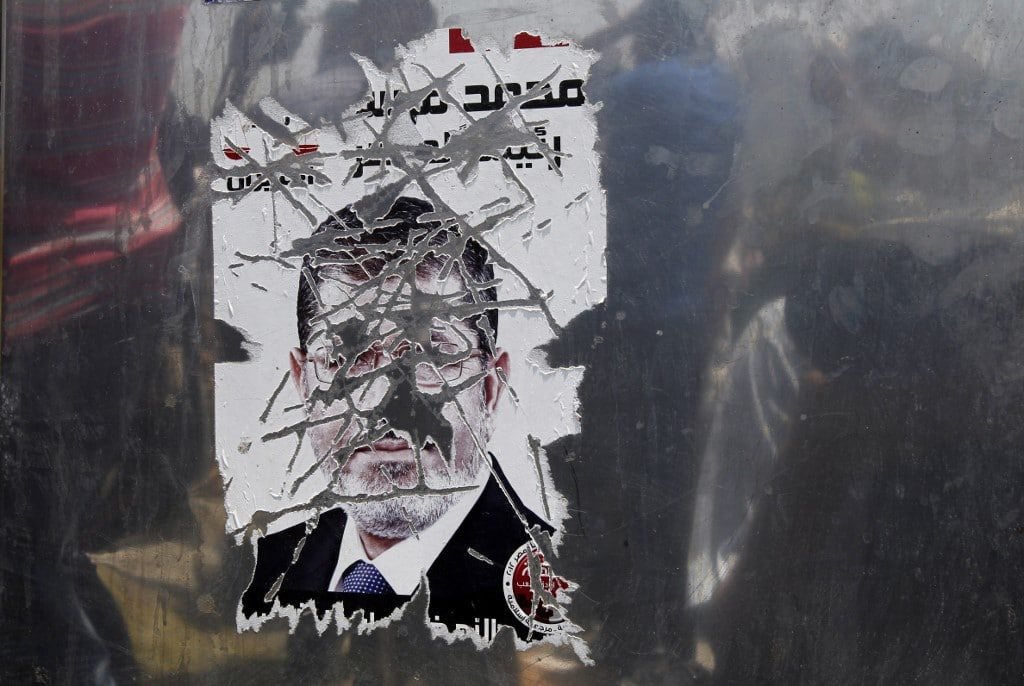
The remains of eyes and ears evoke a strong metaphor in a city haunted by constant state surveillance.
By: Nura Adam
I had all kinds of tactics to prevent myself from going totally crazy.” my aunt used to say while remembering her riddled childhood in a suffocating domestic environment. One of her most effective ones sought to channel her frustration by tearing up stacks of paper, which she would hide beneath her bed. The image of a young girl tearing her anger away remained in my memory. Maybe for that reason, I felt strongly drawn to Cairo’s walls, of which many have been inscribed with the ebb and flow of paper-torn campaign posters. Their growing disappearance inspired reflections on collective memory and the passing of time in Egypt’s rapidly changed public space. In fact, their fragmented overlapping layers resonated with my own withering memories of the uprising, as if I had found a texture for the fleeting images that became more difficult to recollect.
Another reference struck me also as distinctive: the remains of eyes and ears evoke a strong metaphor in a city haunted by constant state surveillance. They translated quite literally into an atmosphere of paranoia where even walls appear to be listening and watching.
More importantly, though, these posters are imbued with the fleeting marks of embodied action. They are saturated with affect, erasure, transformation and nostalgia. I associate them with my aunt’s voiceless frustration and with a period of silenced anger, which is now brewing beneath the seemingly calm surface in spite of the country’s growing political and economic crisis.
What tales inhabit those ruptured, ripped apart and eroded surfaces?
Driven by this question, this piece is an emotive and analytical exploration of campaign posters that can only be read in relationship to their changing public and political context. They unfold as just another battleground in which public images, a struggle over territorial ownership of the street, and the erasure of collective memory are negotiated.
However, this assumption runs the risk of oversimplifying the vast range of actors and events involved in their erasure and distribution.
In fact, as I will discuss later in this article, only a few posters I documented carry obvious and clearly identifiable signs of politically motivated vandalism, and uncertainty over the individual incidents and intentions leaves many questions unanswered.
Nevertheless, the riddled surfaces of political figures communicate a powerful message. Their mutilated depictions counter the authoritative iconoclasm of political campaigning and reverse their intended meaning. The eye-catching conflict that lies within the candidates’ grandeur postures and the posters, withered, stained, defaced, implies a public image stripped of agency and honour: it symbolically challenges the legitimacy, sterility and purity of their public persona.
This obvious provocation could be read as only one of the many reasons why, in early 2015, many posters have been actively removed almost entirely from the walls of central Cairo. Nevertheless they are still seen in low-income areas around the centre of town and in most cities in Upper Egypt and the Nile Delta. With this said, visual political culture in public underlies a particular relationship in Egypt’s recent history.
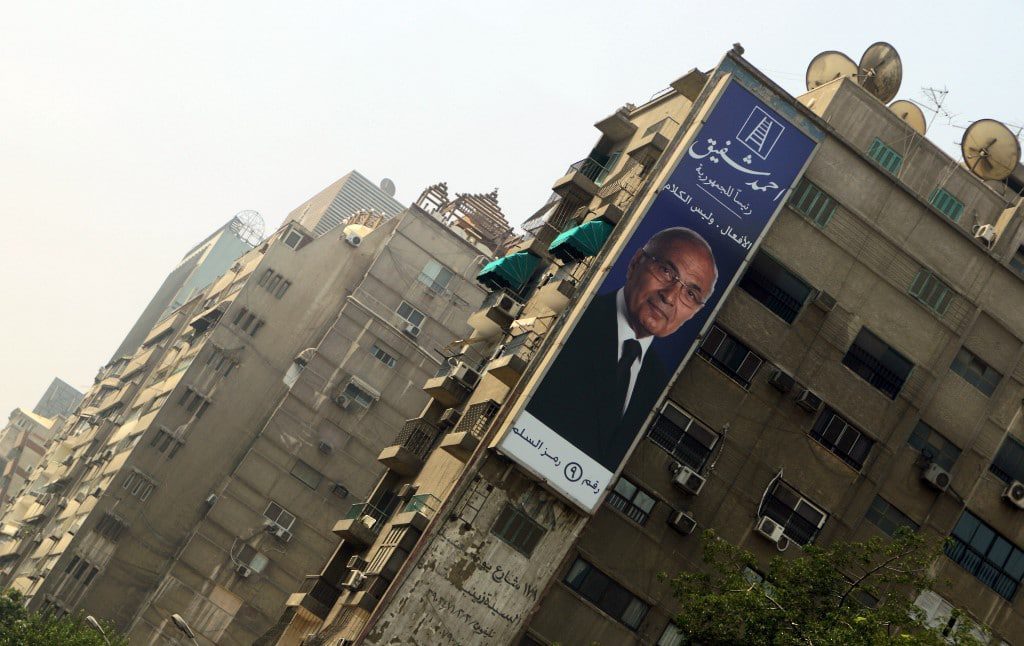
According to Catherine Nash “substantive turn from ‘text’ to performance and practices” in human geography has led to a growing interest in acknowledging the mundane and visual performances of everyday life which stretch beyond verbal expression. This approach is particularly relevant where spoken and written criticism in Egypt fall short of reflecting the overall political atmosphere. Especially so in a moment where most critical voices have been muted and a general apprehension over political debates leaves little incentive for critique. In such a context visual performances might express more accurately the anguish we fail to hear. Instead they surface through performative and visual channels capturing non-linguistic modes of societal expression.
There is no doubt that the Egyptian revolution triggered the reorganization of visual public culture in the streets. The multiplicity of images and vantage points captured, the vibrant rise of public art and visual culture, challenged a highly curated “national” image of the state and its contested public sphere. As visual anthropologist Mark Westmoreland points out the “revolution was as much about overthrowing the government as subverting the iconoclasm of the Egyptian image”.
In this context an impressive array of visual countercultures, performative, action-oriented, and compassionate—found its way into the public in the form of street art, graffiti, photography, videos, and open-air film screenings. What fascinated the public and scholars alike was the interactive and performative immediacy that took place in the streets in direct negotiation with the political climate.
Over the course of the past four years the state initiated an aggressive crackdown on the subversive use of public space, which has pushed back politically charged visual culture and the display of direct political affect back to the margins of obliteration. Instead, the landmarks of the revolution (or what remains of it) forcefully migrated from the street to the private sphere or to the virtual arena, where trending online sarcasm and memes ridiculing Sisi effectively utilize the grey zone of humour to trigger a seemingly innocent yet critical debate. While modes of deploying critical thought through image persist in film, photography, and social media, many of those visual counter-cultures appear to have lost their affective, iterative and physical immediacy. Instead, much of recent art and image production has undergone an internal migration.
Instead the torn-down posters still retain characteristics of embodied action, reminiscent of a visual counter-culture now barely recognizable in the streets of Cairo. They are ephemeral, mundane, saturated with sentiment, and ever changing, like many of the wall paintings produced in Tahrir in 2011 and 2012.
My fascination towards posters, grew during my frequent Friday-morning walks in 2013. Like many others in this period I had taken a growing interest in documenting what seemed to become irretrievable. I found that the posters I was seeking out were increasingly vandalized, papered over, eroded, and had eventually disappeared entirely from walls. The vivid posterscapes of 2011 2012 and 2013 indicative of a lost moment of political diversity disappeared from the walls of downtown in 2016 through the state’s pervasive effort to erase a contested political past.
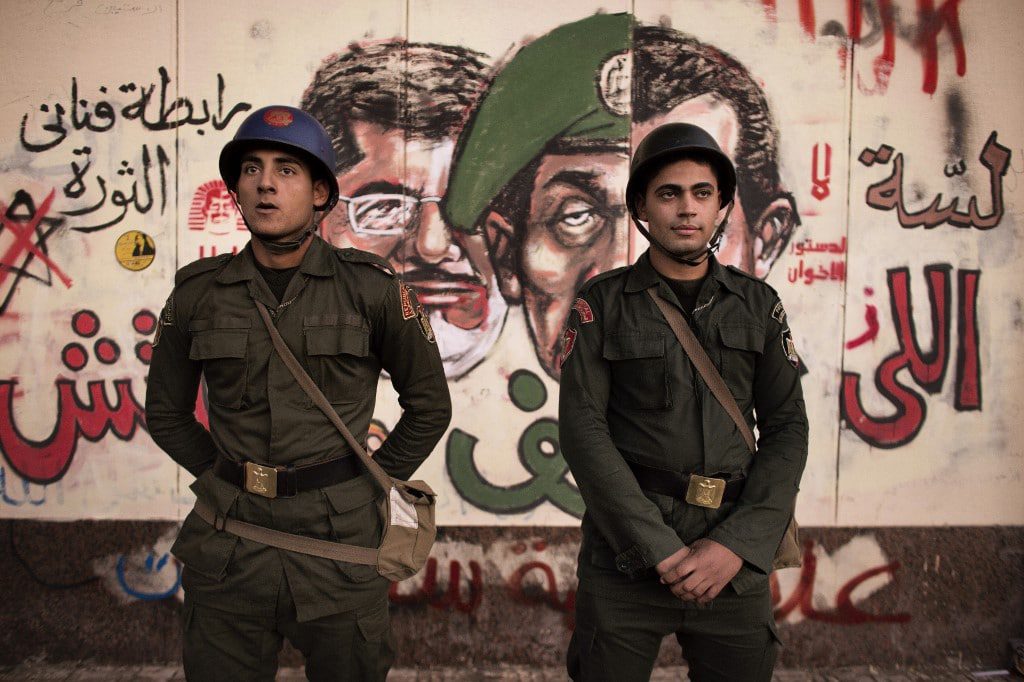
In time, my means of documentation where synonymous with the changes crowding these cluttered surfaces. The circumstances under which people were permitted to take pictures in public suffered from the same restrictions that hastened the disappearance of graffiti and visual culture from the streets, removing all signs of political public visibility. The inauguration of President Sisi was followed by a growing paranoia of cameras, which for me resulted in earlier walks, fewer pictures, haste in pressing the shutter, and the use of smaller devices.
But I could not withhold from thinking of their aesthetic triggers that are inherently political, even more so when they develop a life of their own: The tattered textures are imbued with physicality, emotion, and the effects of time unfolding. They are subjected to the fleeting transactions and competing responses of unknown passers-by and embedded in the environment of a fast-paced, polluted, overcrowded metropolis. Their demolition provides a counter-aesthetic to their candidate’s straightforward, symmetric, and static layouts: their frozen poses, heroic, almost monument-like, suggest stability instead of change.
Paradoxically, time and the effects of an uncontrollable city itself taints their fading surfaces. They are in a state of fluid transformation. Similar to what Sreedeep Bhattacharya observes over decaying and abandoned industrial sight in India: They “lose their distinct material identities as they decay” and within this process “subvert normative modes of movement, vision, arrangement and order.”
The eroded posters are deeply immersed in a crowded, polluted and challenging urban landscape. One that complicates and interrogates the longevity of one-dimensional political claims of stability, safety, and predictability. Each poster advances a dramaturgy of complexity and ambiguity that harshly contradicts their original layouts. As Nick Denes argues “Measures of Stillness and Movement: The Poster in Cinema of the Palestinian Revolution“ posters reconfigured in constant negotiation with the enfolding historicity that surrounds them.
Research on political campaigning suggests that the most important role of postering is to establish a territorial control by politicians over the street and entire areas. In other words, it is a reclamation of public space. For this reason, their targeted destruction could be read as a re-appropriation of the streets by their audiences. A dichotomous tension between the familiarity of the candidates and the anonymity of their street attackers mirrors a territorial battle over public space and its ownership.
The ripped-apart faces contain the embodied immediacy we saw in 2011, just as their texture resonates with the fading memories that haunt many Egyptians. Their disappearance indicates the stagnant state in a one-dimensional political infrastructure that has lost touch with the street. Fading faces contest the oversaturated, authoritative narratives of mainstream political storytelling and underscores a more complex and evolving picture: They generate a continuum to a short-lived reality with an afterlife of its own.
These battlegrounds for public space, highlight the generative dimension of visual political culture. In turn, posters still remain vital artefacts within the public archaeology of political culture, particularly at a moment currently felt in Egypt, where the tensions of passing time and perceived stagnation stand in sharp contradiction to the alleged rapid transformation shaping Egypt today.
The kinds of deterioration that have affected individual posters fall into four noticeable categories: state erasure, in which the state authorized the removal of campaign posters across central areas (not always removing all posters); politically motivated mockery, or vandalism such as scratched out eyes, painting over, or spraying over posters by unknown individuals or opposition groups; removal by residents or shop owners who occupy the buildings; and last but not least, ordinary decay, in which the posters leave behind their own traces of time passing.
Many (but not all) of the posters I have been able to keep over the past years stem from the politically vibrant period of 2011–2014, when a more inclusive political debate was still carried into the streets. The campaign posters from the parliamentary election in 2011 and the presidential election in 2012 were largely concentrated in downtown Cairo and were mostly erased in 2016 and 2017 after Sisi’s election. This took place as part of the authorities’ concerted efforts to regain control over public sphere and visually separate it from its political past.
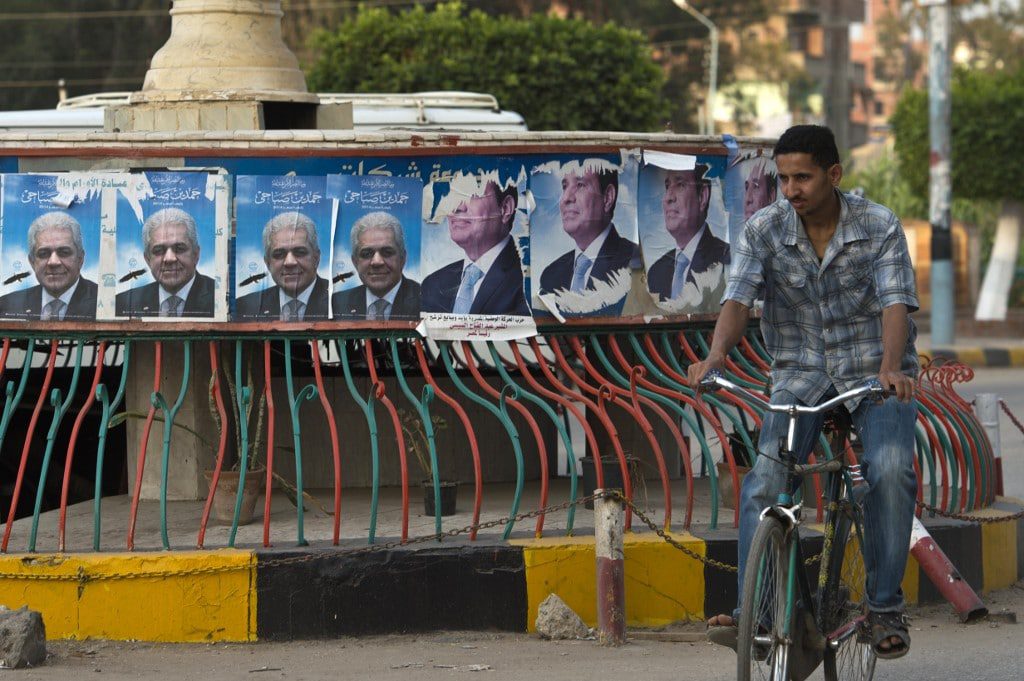
Beyond that, it seemed necessary to rid the walls from the powerful public visibility of the Muslim Brotherhood and Salafist party leaders, many of whom had large campaign budgets. Many bearded (and non-bearded) faces had been widely distributed during the parliamentary and the presidential elections, covering entire house façades.
In recent years, most political parties have been banned, and some of their members detained. In a city where the Muslim Brotherhood has been deemed a criminal party, this visual landscape would be unimaginable today. While a dozen façades of historic downtown buildings, in Cairo’s political centre, have been repainted, many walls still are imprinted with patches of paper, glue stains, and snipped remains, which reminisce over lost opportunities. In the past two years I have had to look even harder, and my walks would extend beyond the borders of downtown into Sayyida Zaynab, Attaba, Abdeen, and Imbaba, where side streets still displayed eroded posters, dating back to the Mubarak era. Quite clearly, the systematic removal of posters by the authorities favoured central and wealthier neighbourhoods over popular ones.
While the ongoing entanglement of social media with street politics has been addressed by many scholars it is not surprising that it is through YouTube that we can best revisit a moment of relative political plurality represented on the walls of Cairo between 2011 and 2013. A wide range of voters, not all of whom seem too familiar with social media, increasingly used the internet as a political tool to promote or denigrate candidates, underlining the drastic differences between then and now. A video by Al-Masry Al-Youm, a prominent state-owned newspaper, presents the mocking jokes surrounding the heavily funded poster campaign of Hazem Bao Ismail, the leader of the Salafist party, whose posters were widely circulated and covered entire facades. This in turn inspired a wave of satirical memes and social media mockery: the shared images depicted his poster in place of the US flag on the moon, or in da Vinci’s painting of the Last Supper. This sort of witty online mockery has become very popular ever since the revolution and continues to exist.
Another video shows a group of people demolishing the poster of ex-president Mohamed Morsi, hitting it with her shoes and scribbling out his eyes. Another Youtube channel shows a masked person ripping off Morsi’s posters with a knife in the early morning. His face remains disguised: once again the anonymous citizen, rooted in the streets, meets the public figure.
These kind of interactions between street politics and social media are inevitable: just as Samuli Schilke describes in his article on Alexandrian wall writings: three-dimensional walls symbolically resonate with the virtual walls of social media. The virtual arena resembles a discursive continuum with an audience that negotiates street politics beyond its temporal and spatial limitations.
According to a Aljazeera video, 5,720 candidates took part in the parliamentary elections in 2011. Colourful portraits flooded entire walls: downtown was completely plastered over, of which only a few of these posters remain today. Yet the posters from the parliamentary elections remain the most frequently found and least harmed until now.
The most prominent posters were the ones from the presidential campaign of 2013, although they have now become much harder to find.
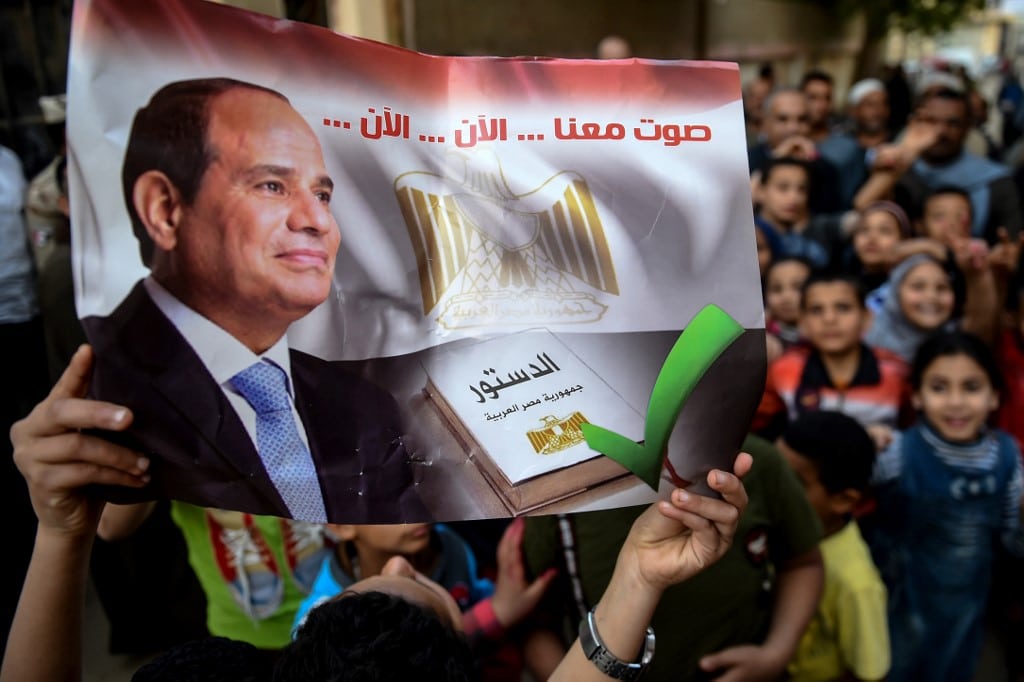
The newest ones I retrieved are from Sisi’s most recent electoral campaign. Most of the few A3 paper posters in his campaign were heavily vandalized. Others, which can still be widely seen, advocate the duty to vote in the elections or proclaim the political alliance of the military with the protestors in the Square. These smaller stickers were widely circulated in 2012 and 2013; they represent the military’s quest to appropriate the popular movement and stir up feelings against the Muslim Brotherhood after the election of Mohammed Morsi to the presidency in 2013.
Political expression has decelerated in recent years, reducing the number of political posters produced and distributed since the ouster of president Mohamed Morsi.
Instead, president Abdel Fattah Al Sisi’s recent electoral campaign featured large plastic banners, which were set up in collaboration with local shop owners and businessmen, far out of reach of the tempted passers-by. While the number of paper posters were drastically reduced in his recent campaign, I could spot a few A3-sized paper posters in Zamalek and Attaba.
The fewer A3 paper posters distributed during this year’s election were heavily attacked by the public. Many were ripped, mutilated or scribbled over. This suggests that the reduction in paper posters partially aimed to contain a critical public and limit its ability to impose its own “views and vision” on the displayed campaign images.
In reducing the number of A3-sized paper posters, campaigning parties deliberately restrained the street’s ability to reclaim agency over the candidate’s public, political image and persona. The campaign’s strategy suggests a fear of public counter-reactions. While the poster is a vernacular means of political campaigning, which does not elevate itself over its viewers and is deeply immersed in its urban landscape, the high-hung banners widely used in the Mubarak era advanced more during Sisi’s recent election and occupied the space and the streets beyond contestation.
It takes a daring counteraction to challenge those wide, expansive, imposing, and intimidating life-size images. The forceful authority that lies within the positioning and dimension of those banners reflects a larger political picture that speaks for the state’s invasive relationship to the public sphere. There is no visual escape, no looking away and no altering of its reality. Its forceful attempts to reconquer it constitute a clear break with the revolutionary past.
Nevertheless, the few A3 posters that were hung at eye level on walls in the recent election, as well as posters from earlier campaigns, hint at one recurrent target: candidates’ eyes have been repeatedly scratched out.
This tactics inspires a wish to blind “the omnipresent, ever-watching state” or to avenge the hundreds of blinded protesters in the violent demonstrations, in the state’s battle against its most critical observers. Within this particular context it reminds us that the loss of sight, both symbolic and physical, has become inscribed in Egyptian political history. Some posters might even assert agency over the lost politics of space and sight. Nevertheless, the uncertainty over what other intention might be situated within the act of tearing leaves certainties in question.
Nevertheless, they remain just one example of the many artefacts that make urban spheres active spaces of remembrance. In my imagination and maybe to those of others, these slashed posters manifest my own chaotic memory, as if I were looking into an inverted mirror, where the past collapses into the present. They remind me of a desire to tear down, rip away, and over-poster the past.
Remark: This article was originally published by https://www.opendemocracy.net/ in August 02, 2019.
“The views expressed in this article are the author’s own and do not necessarily express Fanack’s views.”


